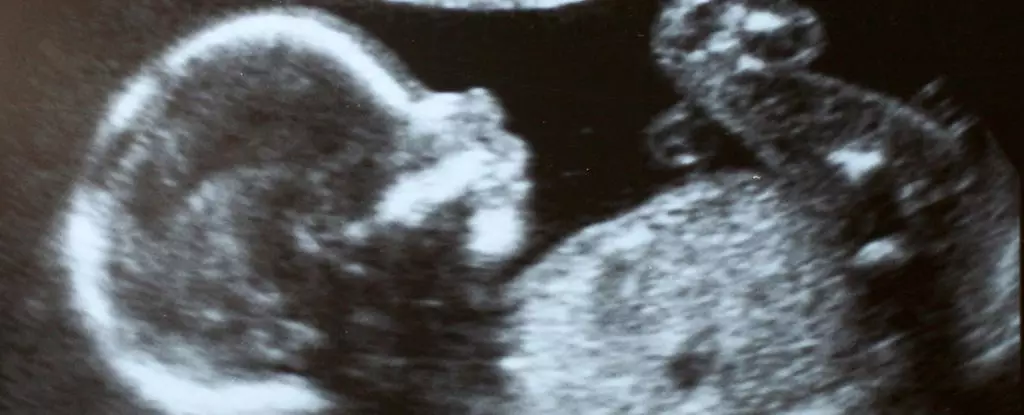In an unprecedented medical advancement, physicians in the United States have undertaken a transformative approach to treating spinal muscular atrophy (SMA), a severe congenital neuromuscular disorder, directly within the womb. This pioneering case study represents a significant shift from traditional postnatal therapies towards a more proactive prenatal solution. The determination of a mother facing the harrowing prospect of losing another child to this affliction catalyzed a daring decision: she opted to begin treatment while pregnant.
Spinal muscular atrophy, particularly type 1, typically leads to profound muscle weakness and respiratory issues, often resulting in a tragic early death most commonly by age two. In this remarkable case, however, a prenatal test had indicated the presence of two genetic mutations associated with type 1 SMA in the fetus. Rather than waiting until birth to commence treatment, which historically has been the norm, the mother’s proactive choice to take the medication for her developing fetus underscores a paradigm shift in how we can approach congenital diseases.
The family had previously endured the heart-wrenching loss of a child to spinal muscular atrophy, making their decision to intervene earlier a deeply personal one. They sought permission to administer the oral medication risdiplam, marketed as Evrysdi, well before their baby’s arrival. This request was met with approval from the FDA, allowing the mother to pursue this innovative treatment that could alter the course of her child’s development.
Risdiplam, developed by F. Hoffmann-La Roche AG, has undergone significant clinical scrutiny, demonstrating its efficacy and safety in treating SMA in newborns. Notably, studies emphasize that earlier intervention correlates with improved outcomes; the sooner a child receives therapy, the more favorable their prognosis. During the course of the mother’s pregnancy, she took risdiplam daily for six weeks, a regimen that enabled the medication to reach the fetus through umbilical cord blood and amniotic fluid. When born, the girl continued her treatment, and remarkably, she has thrived without any symptoms of the disease for over two and a half years.
The implications of this case study extend beyond just one family; they harbor the potential to redefine treatment pathways for congenital diseases. Pediatric neurologist Michelle Farrar commented on the extraordinary achievement of this particular infant, stating that she has exhibited no signs of SMA up to now. The implications for other children diagnosed with similar conditions could be profound if this practice gains traction.
Risdiplam operates by enhancing the production of the survival motor neuron (SMN) protein, a critical component that individuals with SMA lack due to genetic mutations. This vital protein plays a pivotal role in preventing motor neuron degeneration. Experts assert the urgent need for early intervention as motor neuron degradation commences before symptomatic presentation. Pediatric neurologist Laurent Servais emphasized this in a Roche-sponsored clinical trial, reaffirming that children who began treatment early could realize significant milestones like sitting and walking independently.
As we reflect on this case and its ramifications, a key question emerges: will this singular success prompt broader acceptance and exploration of prenatal interventions for SMA? The authors of the study cautiously noted that while this one instance is promising, generalized applicability remains elusive. However, it undeniably opens the floodgates for discussion regarding prenatal treatment options for SMA identified in utero.
While the excitement within the scientific community is palpable, the ethical dimensions of prenatal treatment cannot be overlooked. The decision to intervene before birth raises various considerations regarding the safety and potential risks associated with administering medication to a developing fetus. Additionally, caregivers must grapple with navigating the emotional highs and lows accompanying prenatal diagnostic testing. Understanding the implications of genetic mutations necessitates careful counseling to ensure families are equipped to make informed choices about treatment pathways.
In summation, this remarkable case signifies a monumental shift in the medical landscape, showcasing the potential of prenatal treatments to significantly alter outcomes for children at risk of congenital diseases such as SMA. If embraced widely, this innovative approach may not only preserve lives but also restore hope in families facing similar adversities, ushering in a new era in maternal-fetal medicine.


Leave a Reply